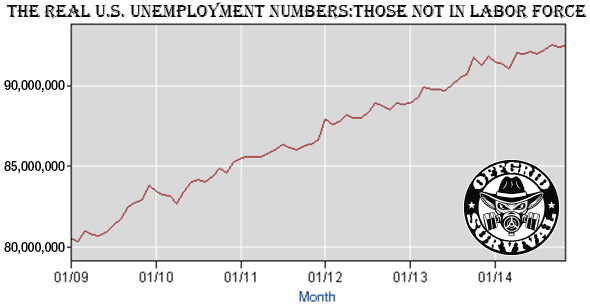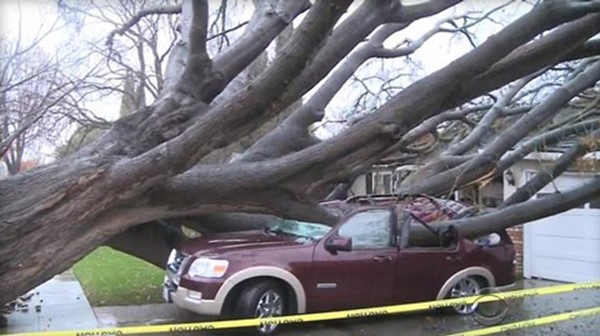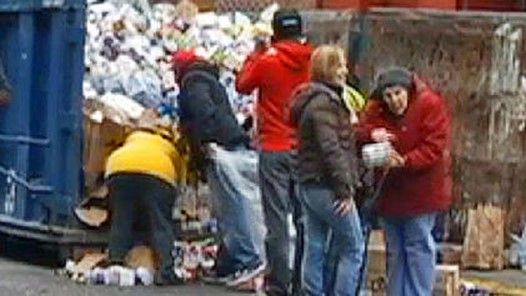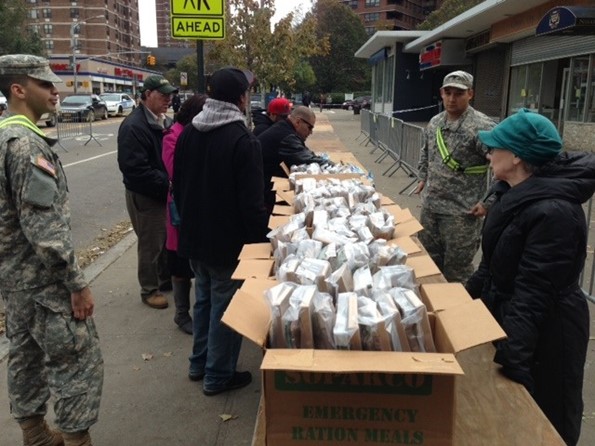Guest post by K.B. from SurvivalBlog.com
——————-
I saw a weather commentary on television one night in late August, 2005, that was a bit different from any I had ever seen before. It appeared that a pair of chubby fraternity brothers were yucking it up over an incoming hurricane. They were downright giddy.
“Yes, indeedy,” the first guy said with a big smile. “It sure looks like Louisiana is a-gonna get spanked. And spanked good! This looks like it might just be the best hurricane ever!”
The other guy agreed with great enthusiasm. “Yes, indeed! A once in a century event. Maybe even a once in a lifetime event and it looks like we’re going to get to see it all right here!”
Apparently, neither of them had gone for weeks without electricity in the Subtropics in late summer, where the heat index can go as high as a hundred and twenty degrees. They had probably never gone to a grocery store to find the shelves stripped bare or waited in line for hours for ice that may or may not be there when the front of the line is finally reached.
I don’t remember which station those idiots were on, but it was probably one of the big stations up north. I don’t remember seeing either one of them on TV ever again either.
We had been through many hurricanes and tropical storms over the years (Camille and Andrew immediately come to mind), but there was something particularly ominous looking about this one. It was huge, the eye was extremely tight, and it looked like we were going to be on the western side of the hurricane when it made landfall.
I went out that Saturday to fill the car up with gas and to pick up a few odds and ends that might come in handy over the coming days, though I wasn’t planning on going anywhere. I was doing this simply because the gas stations had run out of gas after previous storms.
Charcoal had been quite useful after previous storms when the electricity had gone out, so I picked up an extra twenty-pound sack. A few briquettes can heat a cast iron skillet very quickly. I’d been meaning to get one of those propane camp stoves, but whenever I could find the money and actually made the effort to go out to pick one up (usually at the start of hurricane season), the local sporting goods places were always out of them.
Ah, well. Somebody once said that you don’t go to war with the army you want. You go to war with the army you have.
Two cinder blocks and an old refrigerator shelf on a concrete patio table had done service as a stove on other occasions. I also have an old coffee can that has been converted to a hobo stove. (This is done on the outside patio, of course, because of the carbon monoxide, you know.) Two briquettes generally do the trick for the morning coffee, which I’ve brewed on numerous occasions in my very handy German mess kit. It’s aluminum and has a bail handle and a lid that doubles as a small skillet. I’ve actually cooked rice (not the minute stuff but enriched long-grain white rice) with it, and two briquettes can boil a quart of water almost instantly when the lid is on. The mess kit was a daily special from one of the big military surplus mail-order places. They practically gave it to me after I ordered a pair of boots over the phone. Maybe I’ll get one of those propane camp stoves this year.
Batteries were still plentiful at the dollar stores. Also, there were pallets of bottled water and charcoal stacked up in front of nearly every convenience store and service station, and nobody appeared to be buying any of it. There was no sense of urgency among my fellow shoppers that morning or the even next day, when I went out to pick up a couple of extra fifths of eighty-proof nerve tonic. Very few people appeared to be taking the weather warnings seriously. There had been too many misses over the last few years. (However, over the next year or so afterward, if it so much as drizzled, the store shelves would be completely stripped of bread, soft drinks, bottled water, and batteries within an hour.)
I secured the things in the yard that could potentially blow away and went about making the other usual pre-storm preparations. I cleaned out the ice chests and filled them with soft drinks and ice and filled two five-gallon jerry cans with tap water from the bathtub. We had gravity feed from a water tower, so as long as the thing didn’t blow down we would have water for awhile; the toilets would flush, and we would be able to take baths. If things started to get thin there, I had a big stainless steel cauldron we could use to boil water from a nearby creek, and of course we had bleach.
I also arranged the two cases of bottled water in the deep freeze. They would prove to be very useful, as both ice and as drinking water after the ice in the ice chests melted, if the power was out for an extended period.
Over the years we had pretty much converted all of our flashlights and portable radios to AA battery, and we had tons of batteries and candles. Last but not least, I found a couple of pairs of my olive drab, Vietnam-era 100% cotton tropical shorts. I saved them for such occasions.
I also had four seventy-two count cases of MRE entrees and a case of a hundred assorted MRE pound cakes stacked up in a dark corner of the utility room. I picked them up at a very, very good price, shortly after the Y2K thing blew over. They would come in handy in the event of things getting really thin.
I found it interesting that my neighbor in the National Guard Engineer Detachment in town hadn’t been put on alert. He was getting ready to take his family on vacation the day before the storm was scheduled to make landfall, and no silly old hurricane was about to stop him. There was still a chance that the storm would miss us, and the governor was gambling that it would because an alert would cost the state a small fortune.
The mayor of New Orleans called for a mandatory evacuation of the city on the 28th of August, and the Contraflow Plan was activated. All the lanes of I-10 and the other major highways intersecting the city would be directed out, and all the lanes of I-55 were directed north. We were approximately seventy five miles from New Orleans, and our exit was the first place where the Contraflow evacuees would be allowed to get off of the highway.
Our electricity went off shortly after dark the night before the hurricane made landfall. The little Grundig Traveler AM/FM shortwave would be our only source for news from the outside world until the lights came back on.
It was different from the other hurricanes we’d been through. There was almost no rain, and it was still a Category 3 after it made it a hundred or so miles inland. We would find out later that the winds were so strong that the rain became mist before it could hit the ground. The young pine trees in the front yard were bent completely over to where their tops touched the ground. The big oak trees took a pretty good pounding, and there was lots of potential firewood scattered around the yard.
A couple of shingles blew off the roof, but otherwise we were left relatively unscathed. The people who had ridden out the storm in the city started to pick up the broken limbs and other scattered debris.
Then the levees broke.
Several months later, I ran into an old acquaintance who had lived in the city near the 17th Street Canal. He said that after the storm passed, he went inside and started getting the stuff together to do a little outdoor grilling. While he was in his kitchen, he noticed a trickle of water coming from under the door that led to his patio. Next thing he knew, his face was pressed against the ceiling and he was treading water. He and his wife somehow managed to make it into their attic and they dug a hole in the roof with a pocketknife after the water hadn’t gone down for a couple of days. They were eventually picked up by a helicopter.
He’s still got that pocketknife and never goes anywhere without it.
The local news reports were nonexistent, as all of the local radio towers were down. Cell phones were useless, as most of their towers were down as well and the underground landlines were very shaky at best. About all we could really tell from the initial radio broadcasts coming out of Baton Rouge was that several levees had broken and a massive evacuation operation was starting to take place in the New Orleans Metro Area. They didn’t say where they were bringing the evacuees.
There were lots and lots of large military aircraft flying over at the time, mostly C-17s, C-130s, CH-53s, Blackhawks, and Chinooks. More than once, we were shaken out of bed by low-flying CH-53s and Chinooks.
It appeared that the main sources for most of the early radio broadcasts coming out of Baton Rouge were just people calling in to the stations.
Somebody said that a hundred thousand body bags had been staged outside New Orleans. Somebody else said that people were shooting at the rescue helicopters as they passed over. Some people were setting buildings on fire so they could shoot and rob any firemen who might still be around and interested. Giant rats had formed a caravan and were using the I-10 to relocate from New Orleans to Baton Rouge. Crabs from the lake were getting fat from the dead bodies floating around the city. Sharks had escaped from the aquarium and had eaten several people. (There are still a hundred and thirty-five people listed as missing.) Rock and roll legend Antoine “Fats” Domino was missing. (He was eventually found; he had been rescued by a Coast Guard helicopter.) Roadblocks had been set up on bridges to keep evacuees from New Orleans out of Gretna and other areas that were connected directly to the city.
Dangerous prisoners who were being evacuated from New Orleans had escaped. (Two of them were apprehended in an abandoned trailer near my mom’s house.) Citizens were having their firearms seized by law enforcement. Intensive care patients and the nursing home residents were being euthanized by their medical staffs and caretakers. A United States Congressman had commandeered two rescue helicopters to save the furniture from his house, while many of his constituents were trying to survive on rooftops. (The U.S. Congressman who commandeered the rescue helicopters to save his personal belongings is currently in prison, but they didn’t get him for that. He was convicted for racketeering and a bunch of other stuff.) Street gangs had taken over the city.
Nearly four hundred New Orleans Police Officers were missing and presumed lost in the flood. These police officers were eventually accounted for. A large number of them had selflessly saved their patrol vehicles for future use by driving them to Houston or Lafayette before the chaos and looting really got out of hand. Some of the officers did stay and performed as admirably as they could have under the circumstances, and there were others who have since gone to prison for various atrocities. A few of them were convicted and sent to prison in 2011 for the Henry Glover murder and the subsequent cover-up. Five others were sent to prison after the Danziger Bridge shootings. Both incidents involved law enforcement opening fire on unarmed civilians.
A brigade from the 82nd Airborne was supposed to be arriving soon to help restore order in the city. The various local and national leaders did a very good job of making sure the words “martial” and “law” were never strung together in a sentence. “Declared State of Emergency” did have a nicer ring to it.
I finally ventured out about a week after the massive evacuation operation began to see if I could find out anything in town, since the news reports we were getting from the radio were just short of useless. The four-lane highway had pretty much become an eight-lane parking lot for miles in either direction. There were hundreds, if not thousands, of dirty, ragged, and sunburned people just wandering around between the cars and looking up at the sky. A few were sitting under trees or whatever shade they could find; they all had the same glazed-over look. I had seen it before– usually in people who were way too tired and had been through way too much. It was like something out of a zombie movie, except they weren’t zombies and this wasn’t a movie.
The first thing I found out was that over the previous week, the population of our sleepy little town had grown significantly. Later, there would be estimates that our population had gone from around 4,500 to approximately 35,000.
It took nearly two hours for me to drive the four miles into town. Uniformed troops of an unknown origin were attempting to direct traffic, and I somehow wound up getting directed into a MRE distribution line that had been set up in the parking lot of a shopping center.
“How many?” a young-looking E-6 asked. He had an accent that wasn’t local.
“How many what?” I asked.
“How many you got to feed?” He sounded like he might have been from the Northeastern United States.
“Uh, six.” One of my older kids had a friend staying over during the storm.
“Got it.”
Four troops near the back of the truck threw four cases of MREs, four cases of bottled water, and two twenty-pound sacks of ice over the tailgate and tapped it twice.
“Where you guys from?” I asked as I started to drive away. I could tell from the patches they weren’t Regulars and they weren’t local Guard or Reserve.
“Pennsylvania. We’re Pennsylvania National Guard.”
They were from Pennsylvania?
Police from all over the United States were everywhere. I saw a K9 Cadaver Recovery Unit from Idaho.
Idaho?
Somebody must have thought we were in pretty deep poop. I don’t remember seeing any local, parish, or state law enforcement at all. It had been a week since the landfall, and they had probably been pretty busy. They were probably taking a break.
“Any news from the outside world?” I asked one of the National Guardsman who was helping direct the traffic out of the MRE distribution point.
“I don’t know. They sent us here to hand out MREs and water. How and the hell do you people live down here with these mosquitoes?”
I asked another who was halting the traffic on the highway, so the traffic going through the MRE distribution point could exit.
“I don’t know. How in the hell do you people live down here in this heat?”
That was about all I could get out of the Pennsylvania National Guard on that first trip to town. It’s not that they were unfriendly or anything. I don’t think they knew what was going on, either. Plus, they had been busy.
Most of the Louisiana National Guard was still scattered and gone. They were all at home or somewhere else when the chaos started. It would take weeks to get them mobilized at this point.
I decided to attempt to take seldom used back roads in an attempt to get home, since the Red Cross had set up a relief center in a large vacant lot across the highway from the MRE distribution point and I really didn’t want to get directed into a two-hour long line for clean clothes and toiletries that we didn’t need. I was surprised to find the old, gravel roads clogged with utility bucket trucks and military vehicles, but I still managed to make it home in under an hour.
I quickly discovered that given the traffic considerations, the shortest route into town was actually through the MRE line. I was still fairly fluent in the language of the Regular Army and the troops did eventually start to let tidbits of information slip when they got it, which was a bit sooner than the general public did, since they were also there to provide security details. I found out that the Post Office would be opening in a week and that the people who got rural delivery would be able to pick up their mail. The big Postal Processing Center in New Orleans had been flooded out, and the big Postal Processing Center in Baton Rouge was trying to pick up the slack. I also found out that they would soon announce that I was eligible for $750 worth of emergency food stamps and that the Red Cross was going to give all the families in the disaster area $1275 apiece for just having been in the disaster area when the storm hit.
I also found out that this particular Pennsylvania National Guard Battalion had just received a bunch of brand-new 5.56 NATO M249 Squad Automatic Weapons and that, even though none of the troops were ever seen carrying weapons out in the open, there were several fully armed, locked and loaded special reaction teams dispersed out of plain sight at various strategic locations around town. They were behind the Post Office, behind some buildings near the MRE line, and behind the food stamp office, just in case things started to get out of hand for whatever reason.
I figured I’d better go check on my other neighbors. I had known them since I was a little kid, and Mrs. D was a serious busybody. If there was any real news to be had, she would have it. If not, she would at least have some interesting gossip. She and her husband were retired professionals, who lived in a very nice house with an extremely well-manicured lawn. They had been without electricity for about a week. As I approached their yard, I cinched up my belt a few notches and slipped the big Colt Government Model into my back pocket, because I didn’t want to cause Mrs. D. any undue concern. I had been bringing it everywhere lately, and my shirt tail covered it when it was in my back pocket. I hid the old black flap holster and heavy web pistol belt under hedge bush near the front door. All of the doors and windows of the house appeared to be open wide.
“Hello?”
“Back here!” came the answer.
I walked around to the back of the house to see Mrs. D. draping an enormous pair of freshly wrung boxer shorts over her chain-length fence. She had been doing her laundry with a hosepipe, a five-gallon bucket, and an old washboard that had been a decoration on her patio the week before.
“I really miss my washer and dryer, and I’m afraid this heat is killing poor Mr. D. All he does is lie on that mattress we drug out in front of the big window after the air conditioner stopped working. He never did take care of himself the way he should have.”
“He should be acclimated before too long,” I said.
A few weeks before the storm, I thought I had seen a Sasquatch or a bear or something in Mrs. D.’s yard. It turned out it was only Mr. D. He wasn’t wearing a shirt at the time.
“Oh. Did you hear? Uncle Paul’s going to open the store for a little while tomorrow. The bread man, the potato chip man, and the beer man are all supposed to make deliveries in the morning, if they can get through.”
“Whoa. What time?”
“There’re opening at ten in the morning. It looks like we’re going to have to shop by candlelight.”
After that, I made it a point to check in with Mrs. D. every couple of days or so.
Mrs. D’s uncle ran a small grocery store a few hundred yards away from where my driveway intersected with the highway. They were closed on Sundays and had been closed since before the storm made landfall that Monday morning. They would probably still be pretty well stocked. Unfortunately, I was a little short on folding money at the time.
Whoops.
I knew I was forgetting something during those pre-storm preparations. The banks were all closed until further notice, and ATMs did not work without electricity. Mrs. D.’s uncle was a mean old man. I knew people who wound up driving as far away as Arkansas to find ATMs during those first weeks. I did have a big jar of change I kept for emergencies. It was mostly nickels and pennies, but it was still legal tender. There were probably a few dimes in there, too.
There was already a long line outside the store when we got there, shortly before ten. Word of such events gets around fast in a disaster area.
One of Mrs. D.’s cousins was allowing people to enter in twos and threes, while two more of her cousins escorted them around the store. After we finally made it inside, we saw Uncle Paul sitting on a stool behind the liquor counter and manning an old mechanical cash register that had been little more than a decoration the week before. There were six or seven racks of fresh white bread stacked next to the counter and several more empty ones leaning against the wall behind it. Two large ice chests were lined up on the floor in front of the counter. One was labeled “DAIRY” and the other was labeled “MEAT.” Uncle Paul was wearing what looked to be an old Smith and Wesson Service Model .38 on his right hip, and he was dripping with sweat.
Lit candles were arranged between the isles at six-foot intervals, which didn’t help the sauna-like conditions inside the store at all. Shopping carts were not allowed, because of the danger of someone running over a candle. Uncle Paul grunted and nodded toward a sign that said “CASH ONLY” and then toward a stack of shopping baskets. The wife picked one up.
He didn’t appear to notice the big jar of change I was holding, and the improvised back-pocket method for carrying the big Colt piston was still working out pretty okay for the time being.
We picked up a twelve-pack of red Coca-Cola (limit of one per customer), two cans of deviled ham, a big bag of potato chips (another item limited to one per customer), a pound of butter (the only thing left in either of the ice chests, except for the ice), two loaves of bread, and what were possibly the last two packs of red Marlboros to be found in the Gulf South Region.
“Limit one loaf per customer,” Uncle Paul grunted. I put one of the loaves back.
He looked over everything, punched a few buttons on the old cash register, hit the big total button, and said, “Seventeen dollars.”
I set the big jar of change on the counter.
“What is that for?” he asked as his hand moved toward the butt of the revolver.
“It’s money. Give me a minute to count it.”
“You’re crazy if you think I’m going to fool with all that.” Uncle Paul grunted as he rested his hand on the butt of the revolver.
The wife stepped in. “It’s seventeen dollars even, right? Can I just write a check?” Uncle Paul glanced over his shoulder at the long line of people still waiting outside. He grumbled and nodded.
I don’t really think the mean old man would have shot me for attempting to pay for $17 worth of groceries with nickels and pennies. However, at the time, I wasn’t so sure.
The traffic and chaos began to slack up a little after a few weeks. Our electricity did come back on at some point during that time. Ours were among the first lights to come back on, as living down the road from a light company executive does have some advantages. There were people on the other side of town who went several more weeks without electricity. I did eventually find a working ATM at a local bank shortly after the lights came back on in town and it still had some money in it when I finally made it to the front of the long line, but there was a $40 limit on withdrawals.
Rows and rows of small, white, rectangular FEMA trailers had begun to appear in vacant lots and open fields all over the place, and every bit of useable indoor space was occupied by somebody or something. The house in front of ours that had been vacant shortly before the storm, had three families of evacuees from New Orleans sharing it afterward. Somebody even camped out one night in an abandoned barn in a nearby field. I saw their headlights and went to check it out the next morning, but all I found were tire tracks and a few empty beer cans. The brigade from the 82nd Airborne set up shop at a nearby university.
The shortages continued and things in red packaging were particularly hard to find. It was impossible to find red cans of regular Coca-Cola or red Marlboros. (There was plenty of Diet Coke though.) While no fresh meat, fresh produce, or dairy ever seemed to make it to the grocery store shelves, somehow the beer trucks always found a way to make it through, and the Pennsylvania National Guard made sure we had plenty of ice. They were very sharp and professional.
Mrs. D told me that she heard the electricity was back on in the city where the brigade from the 82nd Airborne was and that they were going to open the big Walmart. We probably should have waited a few weeks before making that trip, especially since there wasn’t anything we really needed, but we went anyway. Cabin fever and curiosity got the best of us. The traffic was still pretty rough, and it took nearly an hour to make what had been a twenty-minute trip.
Several hundred people (if not more) were milling around the parking lot. There were people looking for lost relatives. (Message boards had sprung up all over the place since the mass evacuation operation had started and there was still no cell phone service.) Families were looking to pick up a few supplies they should have picked up before the storm, and others were looking to restock their pantries after the unexpected arrival of evacuee friends and relatives from New Orleans. One family I knew had over thirty people move in with them after the storm. People were sleeping in their utility room and tool shed.
Only one of the big store’s entrances was open. I saw people waiting in a long line to pass through a metal detector as we looked for a place to park. I hated to do it, but I was going to have to leave my pocketknife and the big Colt pistol in the car. Two security guards in black BDUs and body armor wanded us after we passed through the metal detector, while two more stood off to the side. They were both holding HK submachine guns, and all of them were armed with big Glock pistols. They were all wearing tactical headsets and Terminator-style sunglasses.
“Where are you guys from?” I asked, as I passed through the metal detector.
I got no answer. He silently waved us into the store. There were no distinctive markings or name tags on their uniforms or body armor. They all had shaved heads, and they were all tall, lean, and muscular. The ripple-soled boots they were wearing probably added a couple of inches to each of them.
I remember being surprised that there were not very many people in the big store, but there wasn’t a whole lot to shop for. The shelves were mostly bare; it was “CASH ONLY”; the ATMs all had “out of service” signs on them; there were no batteries of any kind (which was okay since we still had plenty); and there wasn’t as much as a crumb of charcoal to be found (but that was okay too, since our electricity had come back on). There was no fresh meat or produce, but they did have gallons of whole milk (limit one per customer), and their bakery had been working overtime to keep the bread and doughnuts flowing. Another pair of security guards stood at each end of the bakery counter.
“Where you guys from?” I asked.
Again, there was no answer.
I glanced down to see the selector switch on his HK submachine gun was set on burst.
These were no regular security guards. They were too well equipped, too well armed, too lean and muscular, and too well disciplined. I couldn’t get a word out of them, so I had no chance of picking up an accent.
Mercenaries? Foreigners? Foreign mercenaries guarding a Walmart?
Maybe my imagination was slipping into overdrive, but things were strange all over.
As was typical, we had spent way more time waiting in line to get into the store than we actually spent in the store itself. Probably an hour in the line for the metal detector and twenty minutes to pick up a loaf of bread, a gallon of milk, and a dozen fresh doughnuts.
It may have seemed like a lot to go through for a loaf of fresh bread, a gallon of milk, and a dozen glazed doughnuts, but at the time, they were the best doughnuts in the entire world.
Many of the evacuees were having a hard time adjusting to the current situation. Our small town was in no way prepared for the traffic nightmares that came about after a sudden infusion of 30,000 new residents. Fender-benders and road-rage incidents became common occurrences. A couple of months after the storm, a little fellow in a great big pickup truck parked way too close to me in the grocery store parking lot. Instead of backing out and attempting to park again, he started slamming his door into the passenger side of my much smaller truck. He then shimmied through the partially open door and started screaming and cursing. He clenched his fists and took on a somewhat more threating posture after he stomped around to where I was still sitting in the driver’s seat. His shirtless passenger was right behind him. He was waving his arms around in the air for some reason.
I had already slipped the big Colt pistol out of the old black flap holster, but I didn’t actually cock it until he put his hands on the edge of the open window.
“Can I help you with something?” I asked.
His eyes grew large and his mouth dropped open. He made a kind of squeaky sound as he slowly removed his hands and backed away. He grabbed his passenger by the arm and led him back to the great big pickup truck. He hopped in the passenger side and slid across into the driver’s seat. His passenger got in behind him, and they quietly drove away.
I remember being worried about shooting through my rolled-down window.
It wouldn’t be the last time I cocked the big pistol during what was now being called, “The New Normal”.
Several weeks later, a large SUV came creeping down my long, ill-repaired driveway with its lights off. It was a little after 4:00 a.m. and still very dark, when three little fellows got out of the vehicle and approached my front door.
I have six treacherous little dachshunds that are capable of making quite a terrible racket when they’re disturbed, and they are very easily disturbed. They’re also extremely vicious and have very large teeth, for being such small dogs. We can no longer have visitors, as they tend to bite people– even people they know. Last time my son visited, he wound up trying to get out of the door with one clamped tightly on his rear end. One of them bit my older daughter (also in the same area) the last time she visited, and they raised them as puppies. I have no doubt they wouldn’t leave a scrap of meat on the bones of a stranger.
Anyway, the dachsies made such a terrible racket that I had no trouble at all slipping out the back door unnoticed with the big Colt pistol. I was standing no more than ten feet away and noticed that one of the little fellows appeared to be holding a pry-bar or something. They appeared puzzled as they looked through the window of the front door while the dachsies continued to bark, shriek, and howl. They were making such a racket that I couldn’t hear a thing those little fellows were saying, nor could they hear me cocking the pistol.
Fortunately, they got back in their vehicle and left without further incident. It probably wouldn’t have looked too good if I’d shot them in the back while they were attempting to break in my front door. Of course, they may have just been looking for directions or something.
We had Thanksgiving without a turkey that year. My sister did find a turkey in Baton Rouge for Christmas, but she has connections. We also had a hard time finding Easter candy that spring.
Most of the evacuees eventually started going home to start rebuilding. A few stayed in the area, and some went somewhere else to start over. We actually ran into a few while passing through Northern Georgia the next summer.
For a very long time afterward, the name “Katrina” wasn’t spoken out loud by the locals. It was a weird, almost tribal, kinda thing. It was as if we said the boogeyman’s name, he would come back and get us. When we relate incidents, we say “before the hurricane” or “after the hurricane”.
It’s been nearly ten years, and there are still reminders everywhere. Just the other day I saw a herd of dairy cows around in a pasture between long rows of utility hookups that once serviced a couple of hundred FEMA trailers. We still have the ridiculously over-sized traffic signs that came into vogue after many, many traffic accidents occurred at a couple of intersections that were either beyond the patience or the comprehension of the evacuees. Also, my pine trees are still crooked.
Start now to make sure you are staying prepared.
Via : survivalblog

 Follow
Follow
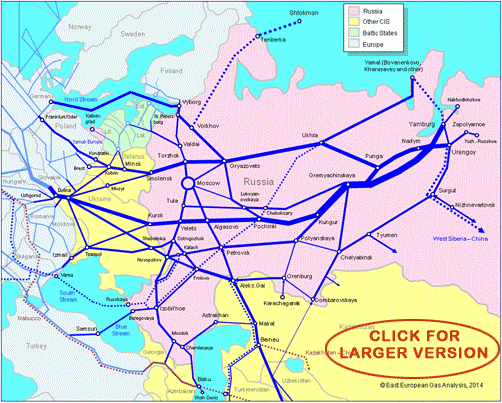

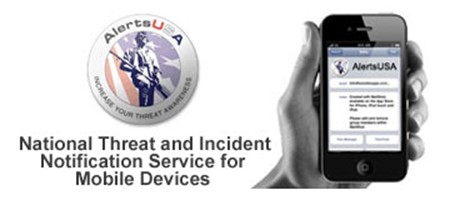
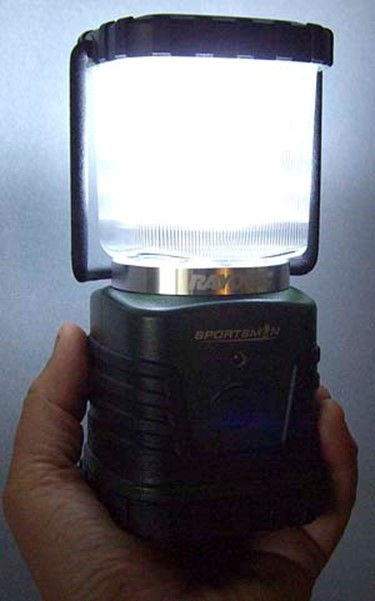

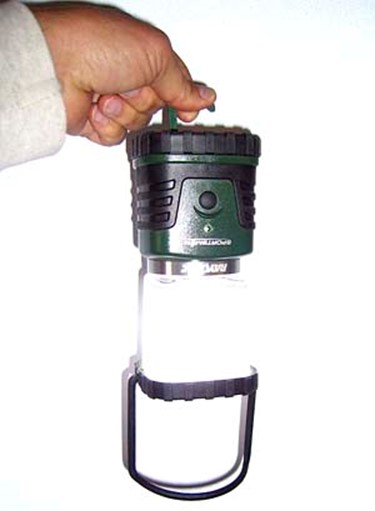
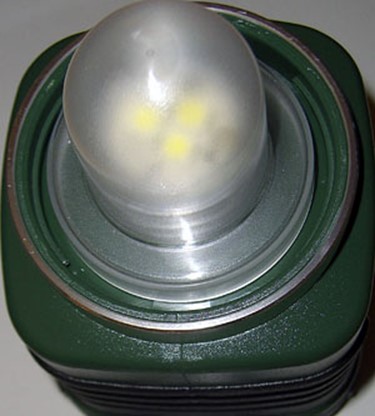
 here.
here.